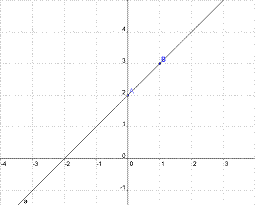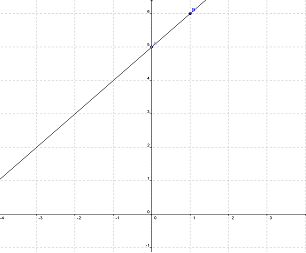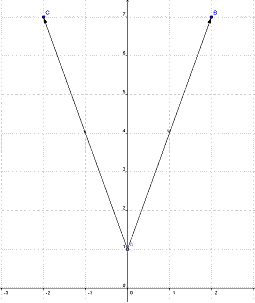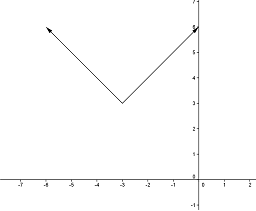The linear function can be written as f(x) = mx + b in function form or y = mx + b in equation form, where the parameters m and b are real constants and x is a real variable. The constant m is often called the slope of the line or gradient, while b gives the value of the y-intercept, which gives the point of intersection between the graph of the function and the y-axis.
Changing these parameters affects their graphs. For example the equation y = x + 2, where m = 1 and b = 2 has the graph

Suppose we change the value of m into m = 2. Our equation becomes y = 2x + 2 and has the graph

As you can see, the line y = 2x +2 is steeper than the line y = x + 2.
Now, suppose we change the value of b from the first equation into b = 5, we have the equation y = x + 5. The graph of this linear equation is

From this graph, we can say that the line y = x + 5 translates the line y = x + 2 by 3 steps upward.
Hence, changing m makes the line steeper or shallower, while changing b moves the line up or down.
We now know that in the case of a linear function y = f(x), expressed in slope-intercept form y = mx + b, m and b are parameters. Also, f(x) = kx represents a direct variation (proportional relationship).
Functions Involving Absolute Value
From the definition of the absolute value of a number, the equation y = |x| is given by

Sketching the graph of the equation y = |x|, we have

Notice that y = |x| is a combination of two linear equations:
(1) y = x, where m = 1 and b = 0, and
(2) y = -x, where m = -1 and b = 0.
Since these equations are both linear, we follow the same rule as what we have learned about changing the parameters m and b of a linear equation.
Changing m would make the lines steeper or shallower, while changing b would translate the lines upward or downward. For example,



The graph of this equation is

Try these questions
- Which equation does this graph represent?

- y = |x+3|+3
- y = |x|+3
- y = |x+3|
- y = |x - 3| - 3
- What is the difference between the graph of y=|x + 3| +3 and the graph of y =|x|?
Recall that the graph of y = |x| is

- The graph of y = |x| is steeper than that of y = |x+3|+3.
- The graph of y = |x+3|+3 is same as the graph of y = |x|.
- The graph of y=|x| is translates the graph of y = |x+3|+3 by 3 units to the left and 3 units upward.
- The graph of y=|x+3|+3 translates the graph of y =|x| by 3 units to the left and 3 units upward.
- Complete the statement: In a linear equation y = mx + b,
- the parameter b is equal to the y-intercept
- the parameter m is equal to the slope of the line
- when the parameter m increases, the slope of the line becomes steeper
- All of the above.
ANSWERS TO PRACTICE TEST QUESTIONS
- A. y = |x+3|+3.
- D. The graph of y=|x+3|+3 translates the graph of y =|x| by 3 units to the left and 3 units upward.
- D. All of the above. All statements are true about the linear equation as discussed in the lesson.